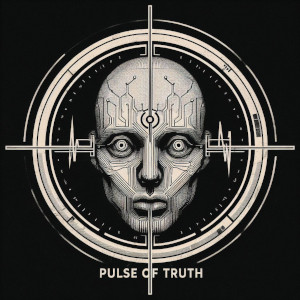

Add in a touch of Ayn Rand and an unwavering belief in unregulated capitalism and you’ll have the prequel to Bioshock.


Add in a touch of Ayn Rand and an unwavering belief in unregulated capitalism and you’ll have the prequel to Bioshock.


That was something they could actually market to the consumer as a necessary upgrade, though.
Going from HDMI 2.1 to DisplayPort 2.1a doesn’t offer anything other than higher bandwidth, and not even high-end PCs are capable of pushing resolutions at high enough framerates for that bandwidth to have been the limiting factor for games.
Because of that lack of perceptible benefit to them, the optics of replacing HDMI on consumer devices that are meant to be connected to TVs isn’t going to be good. Even if it’s an objectively better standard from a technical perspective, it will just come across to consumers as an unnecessary change meant to push their TVs towards planned obsolescence.
They’re going to complain about it, the media will pick up on the story and try to turn it into a scandal, and then legislators and regulators will step in and make decisions based on limited understanding of the technical reasons. By that point, one of the console manufacturers will have been pressured into backing down and promise to keep HDMI in their next-gen console, and the other ones will have followed suit because they don’t want to lose sales over it.
The only way console manufacturers are going to stay united in kicking HDMI to the curb is if the organization behind HDMI pulls a Unity move and starts charging royalties to the manufacturers for every time a consumer plugs the console into a TV.


As long as the manufacturers are competing against each other, that’s never going to happen.
The “gamer” consumer demographic has some of the most whiny, entitled vocal minorities. They’re going to endlessly complain about the next generation of console needing a special cable/dongle to connect to their TV, one of the manufacturers are going to fold, and then the other one is going to walk back the lack of HDMI because they don’t want to lose sales to their competitor.


Really striving for the most efficient way to kill the tourism industry, huh?


Musk’s strategy is to constantly build hype and gain investments by promising something will be “ready by next year”, even if it’s nowhere close to ready. And then, when those investors start pressuring him about timelines, he pushes a half-baked, low-quality dumpster fire out the door.
It’s hard to fuck up worse than that. And to Newell’s credit, he’s run Valve in the exact opposite way that Musk runs his companies: waiting until they have a working product before saying anything.


Mac is very similar to Linux in that it comes with bash (these days zsh) and a lot of the command line tools you’d expect on Linux, including gcc
No it doesn’t.
The gcc command is a wrapper for clang, and the clang command is a stub that runs an executable used to install the “Xcode Command-Line Tools”
It also uses the BSD coreutils, rather than the GNU coreutils present on most Linux distros. The two are only compatible up to functionality defined by the POSIX standard, and anything beyond that is an inconsistent mess.
Windows is more difficult. The command line is very different (it inherits from DOS instead of Unix like both Mac and Linux). It doesn’t come with Python pre-installed
If you limit yourself to not using WSL, sure. WSL 2 runs an actual Linux kernel with the same Linux executables you would find on any other distro.
It’s still Windows and full of telemetry and AI garbage nobody wants, but it somehow manages to have better Linux compatibility than macOS.


Can gop bail out the store or is that strictly for
farmerstheir corporate donors and personal friends?
FTFY


Even Musk, for all his recent evil got rich trying to reduce our dependence on gas cars.
Everybody else already covered his role in Tesla, so let’s look at something else that demonstrates his concern for the environment and his fellow species:
He has a datacenter in Memphis running 35 “temporary” methane generators to power Grok, the self-described “Mecha Hitler” AI. All but a dozen of them are being used without permits for permanent generators, and none of them have air pollution filtration systems installed. Oh, and it’s near a low-income community that was already plagued by air pollution.
A recession helps the wealthy. They get to buy property, services, and company ownership at fire-sale prices while the rest of us have to sell assets and labor below their actual value to avoid starving to death.


I can’t speak for the others, but for CachyOS at least, there is actually a valid justification for its existence. The kernel is built with a different CPU scheduler, and they have packages repos built using modern -march options instead of targeting the lowest common denominator for compatibility.


“Every accusation is a confession.”


Unsurprising. Drivers are better than they used to be, but some of them (Nvidia) have a long way to go in terms of optimization.
More importantly, however, is the complete lack of info the article provides about their testing methodology.
They said they tested on SteamOS—ok, but it’s not officially available on non-handheld devices. How did they install it? Did they use HoloISO? Did they install the version meant for handhelds on a desktop PC?
How did they run the games? Directly through an embedded gamescope session like the Steam Deck, or through KDE Plasma, which has a compositor that can’t be disabled on Wayland. Or, did they take the double hit and run gamescope as a window within Plasma?
Speaking of Wayland, did they use Wayland or X? They have different performance characteristics, and it’s not negligible.
How many runs did they do? One-and-done, then record what the game said the average FPS was? Average of 5 runs? Were runs with outliers excluded and retested?
Did they pre-run the scenes to ensure the assets were cached from the disk and the shader caches were available? Did they restart the system between games? Did they restart the system between runs?
And the way they present the results are also bad:
They graph the FPS achieved by each platform, but they have absolutely no detail about the 1% or 0.1% lows—and at a sufficiently-high average FPS, these are what make the games feel slow and stuttery.
What about frametime graphs and frame pacing information? If Linux can achieve more consistent pacing at 85% of the average FPS, it would still be a better experience than having the same frame being presented repeatedly because the game missed the vblank window.
They didn’t try multiple resolutions to identify where the bottlenecks are occuring in each game. If a game is CPU bottlenecked by their hardware choices, it’s not a good comparison of GPU performance. Likewise, if it’s GPU bottlenecked, it’s not a good comparison for CPU performance.


And native software.
Because JavaScript runs everywhere, we have companies creating “apps” and PC “programs” that are little more than glorified web views. There’s normally nothing wrong with having shared code across implementations, but when that shared code is a 4 MB bundle of crap that creates 100s of MB in dictionaries and JIT compiler caches, you’re ruining the end-user experience.


AMD: “Our partners will fry your expensive CPU on some boards.”
INTEL: “Our software will fry your expensive CPU on all boards.”


Fuel efficiency—the measurement for getting more mileage out of the same amount of gasoline. Congratulations, MAGA voters, you played yourself! When you pick up that new pile of trash made by Ford or Stellantis (and I know you will because they’re AMERICAN* cars), I hope you enjoy the higher gas expenses that you voted for.
* With the extra irony being that many of those “American” brands are owned by Stellantis, which isn’t even headquartered anywhere in North America.


From the perspective of the Kohler toilet camera being the sender and the Kohler shit-reviewing service being the recipient, TLS can technically be end-to-end encryption. As long as the shit-reviewing server is doing the TLS termination itself—and not Cloudflare or a reverse proxy—that meets the definition insofar as only the two communicating parties having the ability to see the cleartext. That’s assuming the server has disk encryption and no employee has access to it while the disk is unlocked.
Kohler calling it E2EE is still disingenuous as fuck regardless of my above hypothetical, however.


they exist, in large part, because articles like this normalize it
This complaint is missing the forest for trees.
Special classes of people have existed for as long as civilization has exited. Leaders and followers, kings and peasants, the wealthy and the poor, etc. As animals, it’s in the nature of some of us to desire a greater share of resources and luxury at the cost of depriving others from having the same.
An article repeating the notion of people with specific skin tones are part of a privileged class isn’t the problem, it’s just a symptom of the problem. The problem is the bigots who put that into practice, singling out and causing problems for people with specific tones while providing benefits to those with other specific tones. Getting rid of public acknowledgement about class disparity isn’t going to get rid of class disparity, it’s just going to get rid of discussion about class disparity. The racists will still be there, being racist.


The only way that username would check out is either if it was owned by a pushy and holier-than-thou social progressive with zero self-awareness, a conservative with a small world view that feels “owning the libs” is a personality trait, or a troll.
Now, considering your account was created on this platform two days ago, just called the resident population of Lemmy stupid, and drink whatever kool-aid Musk is selling, it’s a toss-up between the last two.


Much like Musk himself, it seems.
Oh, that’s easy. It’s the immigrants’ fault. Or it’s Biden’s fault. Or it’s the Democrats’ fault.
When objective truths don’t hold any weight whatsoever, blame can be assigned freely without having to perform mental gymnastics to make it make sense.